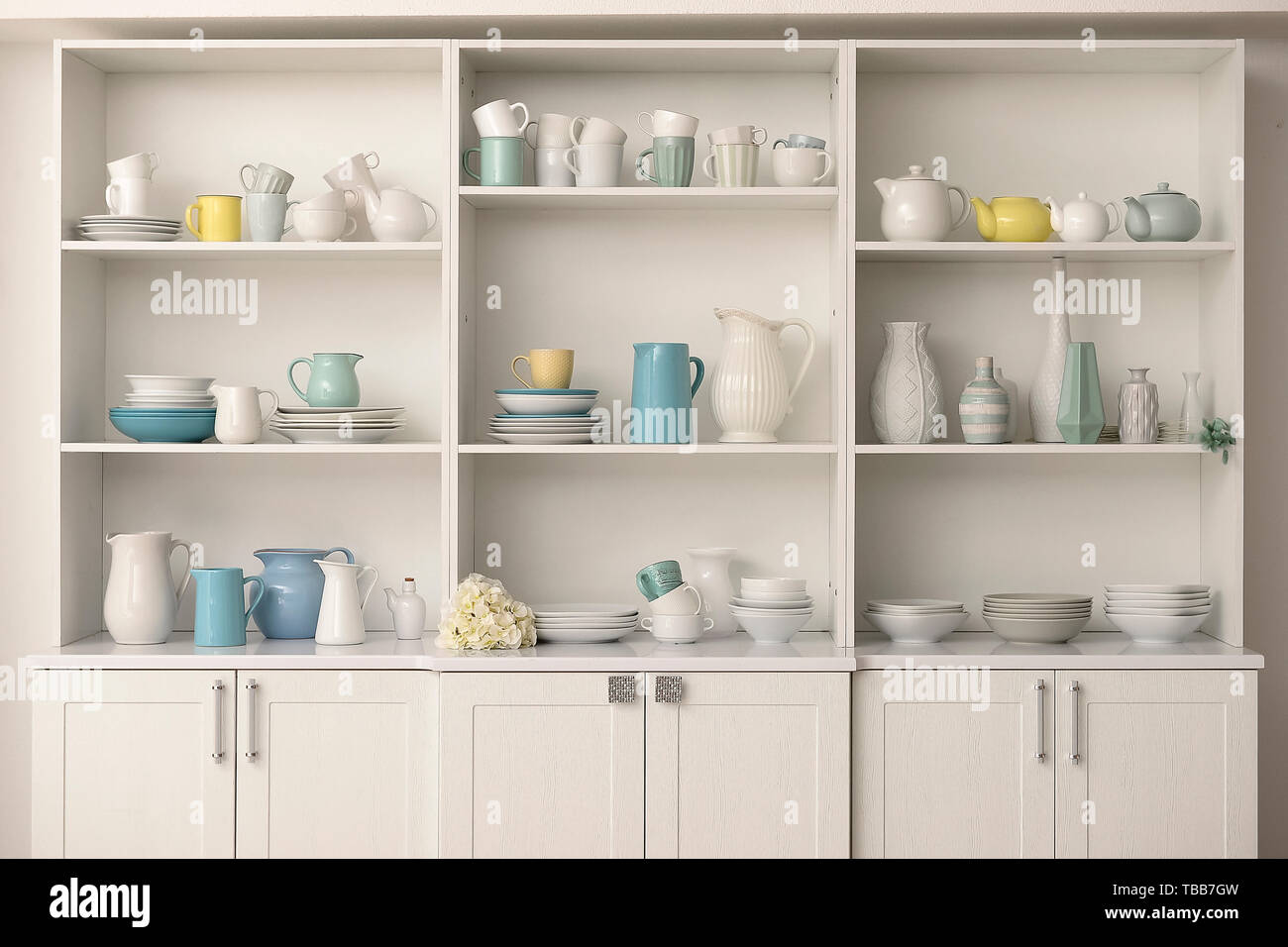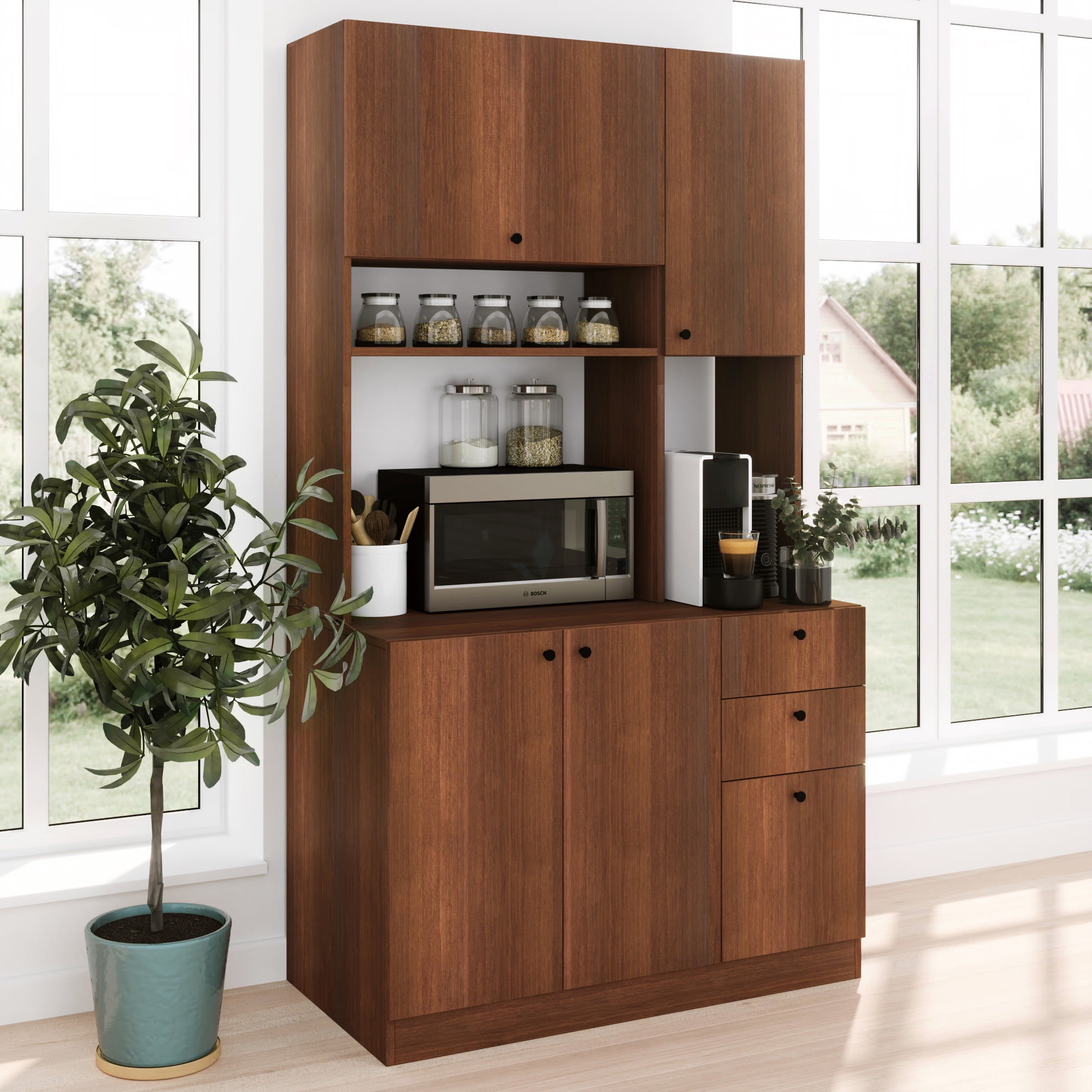The Allure of Antique White Buffet Cabinets

Antique white buffet cabinets possess a timeless elegance that transcends fleeting trends, making them a cherished addition to any home decor. Their classic charm seamlessly blends with various design aesthetics, adding a touch of sophistication and warmth to any space. The soft, muted hue of antique white evokes a sense of serenity and sophistication, creating a welcoming ambiance.
The Role of White in Interior Design, Antique white buffet cabinet
White, a symbol of purity and simplicity, plays a pivotal role in interior design. It possesses the unique ability to amplify the perception of space, making a room feel larger and airier. This effect is particularly beneficial in smaller spaces, where maximizing the illusion of spaciousness is crucial. Antique white buffet cabinets, with their light-reflecting properties, further enhance this effect, allowing natural light to dance across the surface and illuminate the surrounding environment.
Complementing Diverse Design Styles
Antique white buffet cabinets exhibit remarkable versatility, effortlessly adapting to a wide array of interior design styles. Their neutral tone serves as a blank canvas, allowing them to harmonize seamlessly with existing color palettes and decorative elements.
- In a traditional setting, an antique white buffet cabinet can complement ornate moldings, rich fabrics, and antique accents, creating a timeless and elegant ambiance.
- For a contemporary space, the clean lines and minimalist design of an antique white buffet cabinet can provide a striking contrast against bold colors and modern furniture.
- In a farmhouse-style home, an antique white buffet cabinet can evoke a sense of rustic charm, blending effortlessly with natural textures and distressed finishes.
Exploring the History and Craftsmanship

The evolution of the buffet cabinet reflects the changing needs and aesthetics of society throughout history. From its humble beginnings as a simple storage unit to its transformation into a statement piece of furniture, the buffet cabinet has traversed a fascinating journey, marked by both functional and artistic innovations.
The Origins and Evolution of Buffet Cabinets
The buffet cabinet, in its earliest forms, emerged in the 16th century in Europe, where it served a practical purpose: to store and display tableware, linens, and other household necessities. These early cabinets were often crafted from sturdy woods like oak and walnut, and they featured simple, functional designs.
The 17th and 18th centuries witnessed a significant shift in the design and function of buffet cabinets. As styles evolved, they began to incorporate more intricate carvings, decorative elements, and elaborate finishes. The introduction of new materials, such as mahogany and cherry wood, further enhanced the aesthetic appeal of these cabinets.
The 19th century marked a period of widespread adoption of the buffet cabinet. With the rise of the middle class, the buffet cabinet became a popular and essential piece of furniture in many homes. During this time, the cabinet evolved into a more versatile piece, often featuring built-in drawers, shelves, and even mirrored doors.
Materials and Techniques in Crafting Antique White Buffet Cabinets
The materials and techniques used in crafting antique white buffet cabinets are a testament to the skill and artistry of the time.
- Wood Selection: Antique white buffet cabinets were typically crafted from hardwoods like oak, walnut, cherry, and mahogany. These woods were chosen for their durability, strength, and aesthetic qualities.
- Wood Preparation: The wood was carefully selected, dried, and planed to ensure a smooth and even surface for carving and finishing.
- Carving and Joinery: Carving played a significant role in the decorative aspects of antique white buffet cabinets. Skilled artisans employed hand tools to create intricate patterns, floral motifs, and geometric designs. Traditional joinery techniques, such as mortise and tenon joints, were used to assemble the cabinet’s framework, ensuring strength and stability.
- Finishing: The final stage involved applying multiple layers of paint, stain, and varnish to enhance the wood’s natural beauty and protect it from wear and tear. Antique white paint, with its timeless elegance, became a popular choice for these cabinets, creating a classic and sophisticated look.
Prominent Makers and Regions
Several regions and makers are renowned for their exceptional antique white buffet cabinets.
- French Provincial: The French provinces, particularly those in Normandy and Provence, were known for their rustic and charming furniture designs. Antique white buffet cabinets from these regions often featured simple lines, hand-painted details, and distressed finishes.
- American Colonial: Colonial-era American cabinetmakers produced sturdy and practical buffet cabinets, often crafted from local hardwoods like maple and pine. These cabinets were typically painted in muted tones, including antique white, and featured simple, functional designs.
- English Country: English country furniture, with its focus on functionality and natural beauty, produced antique white buffet cabinets that were characterized by their sturdy construction, simple lines, and often featured hand-painted details.
Styling and Functionality of Antique White Buffet Cabinets
:no_upscale()/cdn.vox-cdn.com/uploads/chorus_asset/file/19523323/batwing.jpg)
Antique white buffet cabinets, with their timeless elegance and versatile functionality, seamlessly blend into various interior design schemes. Their inherent charm lies in their ability to act as both practical storage solutions and captivating focal points, adding a touch of vintage allure to any space.
Styling an Antique White Buffet Cabinet as a Focal Point
Antique white buffet cabinets are often the star of the show, demanding attention and setting the tone for the entire room. To highlight their beauty, consider placing the cabinet against a contrasting backdrop. A dark wall, for instance, will create a striking visual contrast, making the cabinet stand out even more. Additionally, strategically placed lighting, such as a pendant lamp above the cabinet, can illuminate its intricate details and create a warm, inviting ambiance.
Incorporating Antique White Buffet Cabinets into Different Room Types
Antique white buffet cabinets are incredibly adaptable and can be seamlessly integrated into various room types.
- In a dining room, the cabinet can serve as a stylish serving station, holding fine china, silverware, and linens. It can also be used to display cherished family heirlooms or decorative pieces, adding a touch of personal history to the space.
- In a living room, an antique white buffet cabinet can serve as a media console, housing a television, DVD player, and other entertainment equipment. The cabinet’s open shelves can be used to display books, decorative items, or even family photos, creating a cozy and inviting atmosphere.
- In an entryway, the cabinet can function as a welcoming focal point, showcasing decorative items, keys, and mail. Its closed storage space can be used to conceal clutter, creating a sense of order and organization.
Storage and Display Options Offered by Antique White Buffet Cabinets
Antique white buffet cabinets offer a wealth of storage and display options, catering to diverse needs and preferences.
- Closed storage compartments provide ample space for concealing clutter, while open shelves offer opportunities for showcasing decorative items. These compartments can be used to store linens, tableware, books, or other belongings.
- Some antique white buffet cabinets feature drawers that provide additional storage space for smaller items, such as silverware, napkins, or even jewelry. These drawers can be fitted with dividers to create compartments for organization.
- The top surface of the cabinet offers a versatile display area for decorative items, such as vases, candles, or even framed photographs. It can also be used to showcase special collections, such as antique teacups or vintage books.
That antique white buffet cabinet you’ve got your eye on? It’s probably built with sturdy plywood, a material that’s perfect for holding up years of wear and tear. If you’re thinking about building your own cabinet, choosing the right plywood is crucial.
Check out this guide on best plywood for making cabinets to find the perfect material for your project. You’ll be surprised how much quality plywood can impact the look and durability of your finished buffet cabinet.
An antique white buffet cabinet can be a beautiful centerpiece in your dining room, but sometimes it needs a little TLC to really shine. If you’re looking to give it a fresh look, check out these best way to revamp kitchen cabinets tips.
From painting to hardware upgrades, there are plenty of ways to transform your antique buffet into a modern statement piece.
